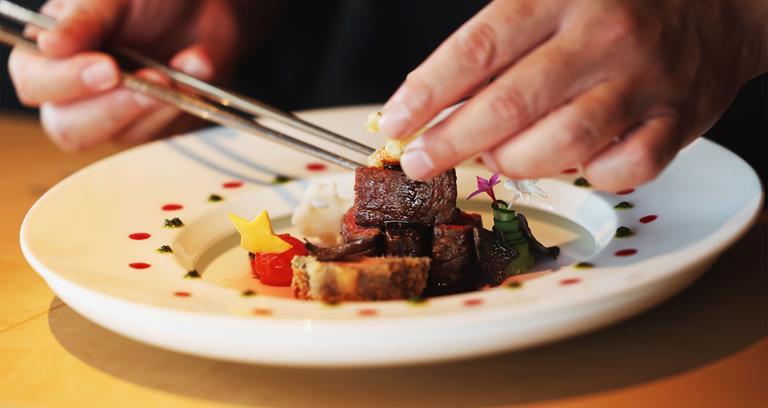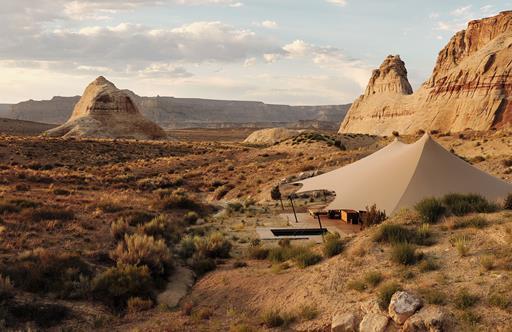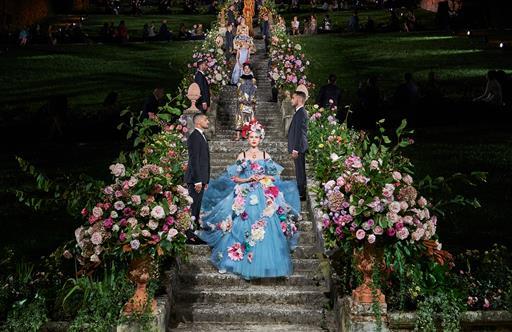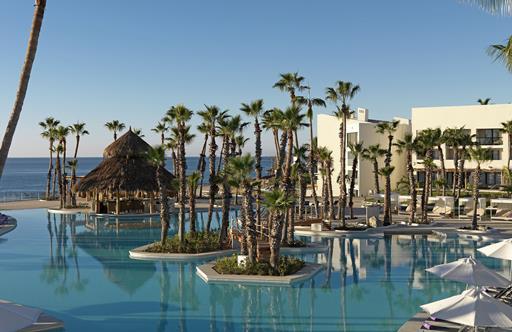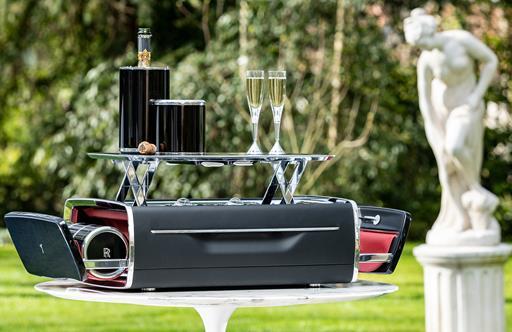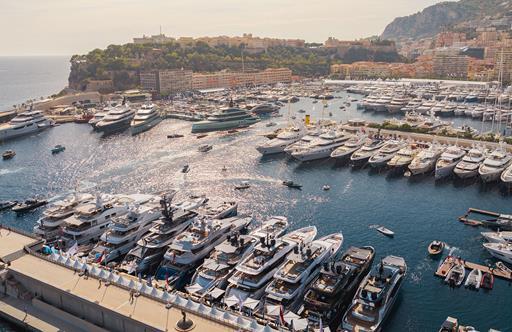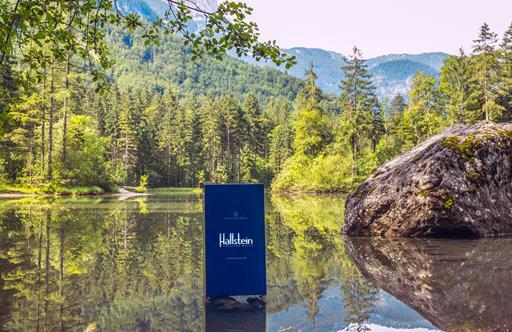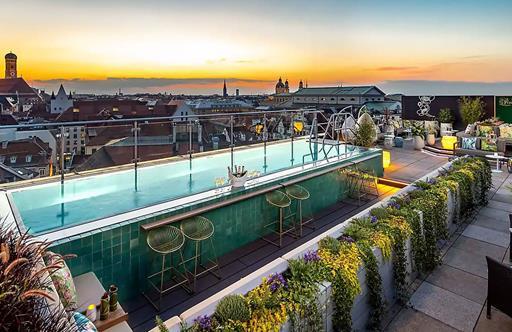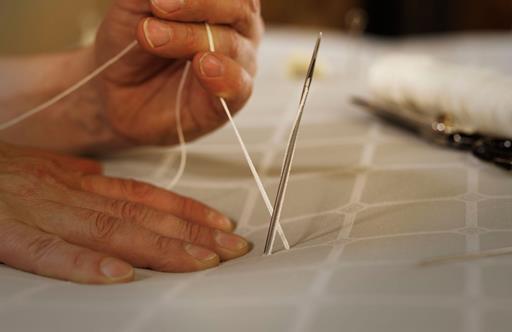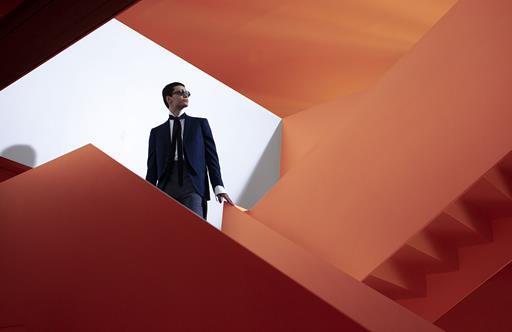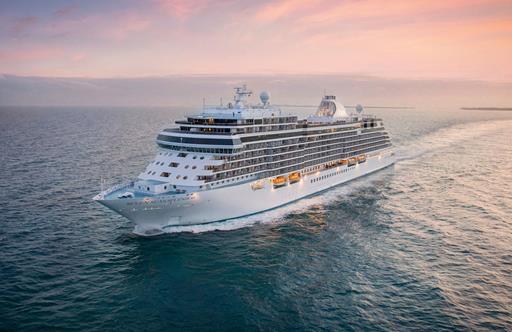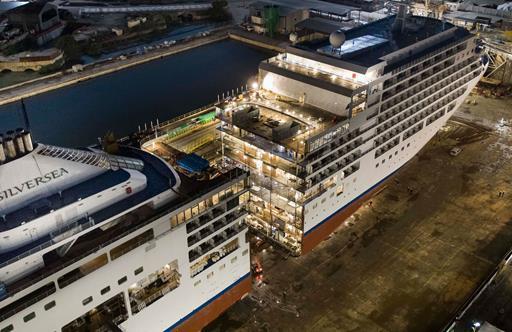Tastes of Okinawa
Locating over 2100km away from Tokyo, subtropical Okinawa - a chain of islands once existed as an independent kingdom – offers unique tales and terroirs like no other
Verging on equidistance to China, Japanese main islands and South East Asia, it is perhaps no surprise that Okinawa shows a curious mix: indigenous beliefs of the past and external influences of the later days coexisting side by side. The history of the Okinawan Islands had been turbulent, to say the least, but the region’s unparallel charm is undeniable, transcending to its fascinating cultural offerings and abundance of tales, tracing back to the time of the Ryukyu Kingdom.
The Ryukyu Kingdom, established in the early 15th century until the Meiji Restoration incidentally ceasing its 450 years of independence, has left modern Okinawa with numerous historical sites, many registered today as World Heritage Sites. One of such is Sefa-Utaki, a sacred place of rituals with a great view of the Kudaka Island, an island believed by the Ryukyuans as the birthplace of the nation. Sefa, roughly translates as a ‘place of purity’, and they are many of such scattered all over Okinawa - where male presence was long forbidden and still considered as places of worship.
Despite the perfect recipe for tourism, being an archipelago of untouched nature filled with fascinating mythologies, Okinawa became a canvas for luxury resorts and developments only after the Okinawa Reversion Agreement between Japan and US was signed in 1971, and soon after the Okinawa Prefecture was officially returned to Japan. With its uniqueness, the fertile terroir and culinary traditions like no other, it is now considered as a new culinary frontier of Japan, attracting a handful of world-class culinary masters. Here are the three such remarkable examples, where the respect to Okinawa’s heritage stays true to their heart.
One Suite THE GRAND
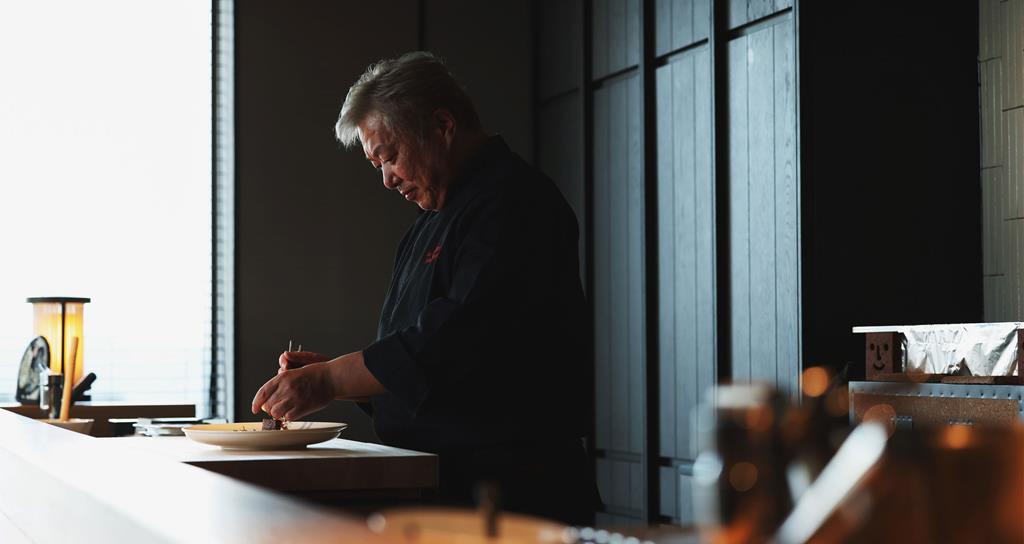
“Okinawa is just like an unpolished gem, with nothing but potential”, says Shinji Kajiwara, the head chef of La Bombance Kourijima – a sister venture of the Michelin-starred counterpart in Tokyo - at One Suite THE GRAND, a resort just opened its door in July 2021. Kajiwara’s intuition is certainly grounded: born in nature-rich Hokkaido and worked many years in Tokyo as an executive chef.
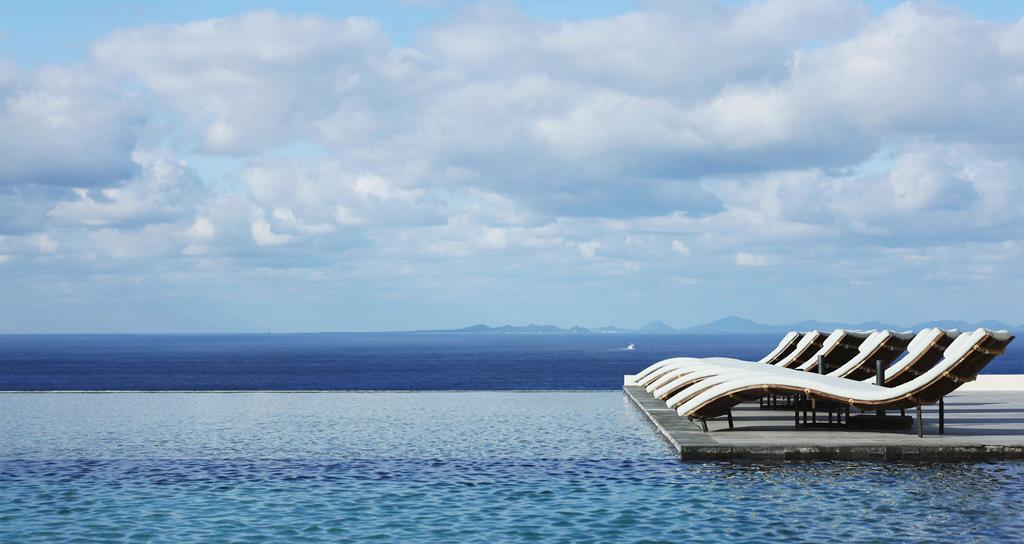
Kourijima, where the resort is located, was only accessible by ferry until 2005 when the Kouri Bridge has connected the island with Okinawa's main island, the largest island in the region. The many years of remoteness, however, kept the island’s nature untouched, preserving Kourijima’s bountiful flora and fauna intact.
The winding path through a vast field of overgrown sugarcane fields leads to a hill, where One Suite THE GRAND now stands. It is said that during the Ryukyu time, a watchtower was placed at this very hill – explaining perfectly the breathtaking vista from the hotel’s infinity pool.
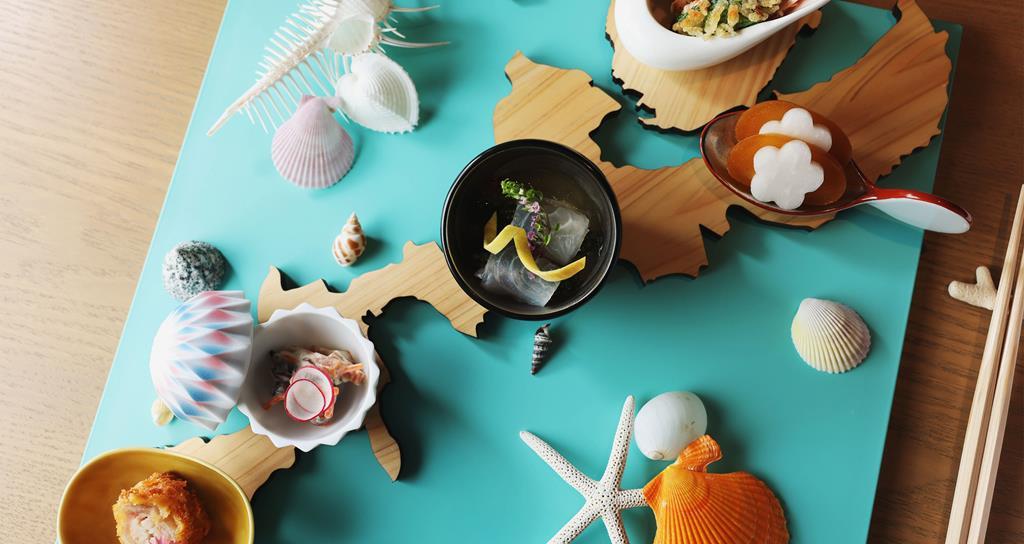
The dishes offered at La Bombance Kourijima, complemented magnificently with the emerald-blue water that surrounds the island, resemble the creativity of the mothership in Tokyo, but what makes the experience at La Bombance Kourijima remarkable is how Kajiwara uses of local harvests he carefully selects. A collection of appetisers served on the wooden plate in the shape of Okinawa's main island is a symphony of local delicacies: makubu, a type of wrasse, particularly popular in the Nakijin region served with sea grapes; gelee of local citrus, shekwasha; salting mullet roes drained in the house with local liquor awamori; green papayas rolled together with popping rice crackers in agu pork, all served as a culinary fanfare of the unique Okinawan terroir. The memorable Motobu beef, one of Kajiwara’s favourite local ingredients, rarely seen at the culinary capital Tokyo, is transformed into an undeniable innovative fusion dish, presented beautifully on a brilliant white plate.
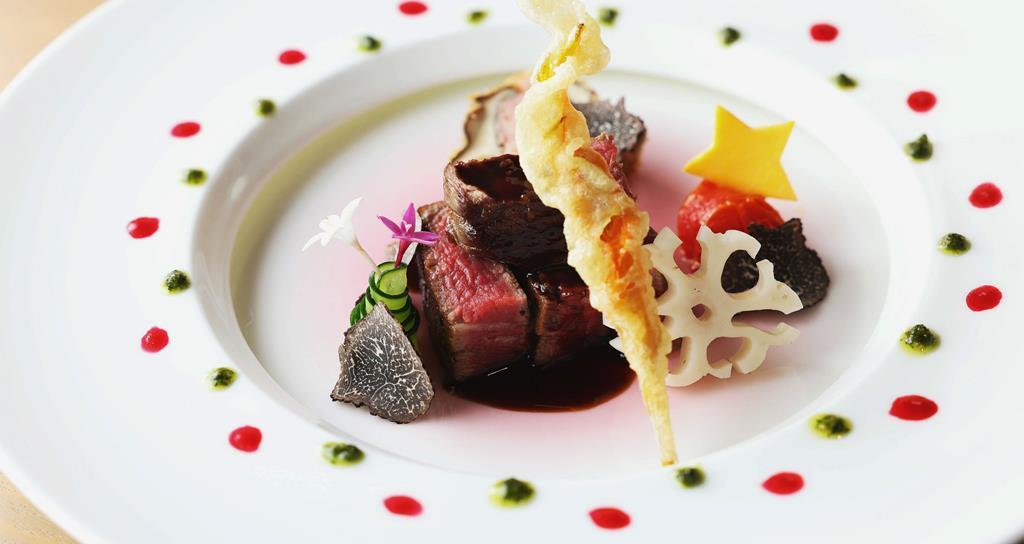
Behind the splendid presentation of his plates hides Kajiwara’s principle – using the finest ingredients treated with the utmost care, but with simplicity at core. His dashi, the vital foundation of Japanese cuisine clearly shows his stance. “We prepare dashi with the very best of ingredients: kelps from Rausu, and bonito flakes from Mie that are finished with care in Kagoshima. Meats or fish are then prepared traditionally, staying true to the foundation of Japanese cuisine. Because of this solid base, we can elaborate the presentation and convey more complex creative intentions”.
Continuing to be inspired by the beautiful scenery of Kouri Island and the ‘new’ culinary discoveries that the local terroir offer, Kajiwara’s creative journey has only just begun.
THE HIRAMATSU HOTELS & RESORTS GINOZA
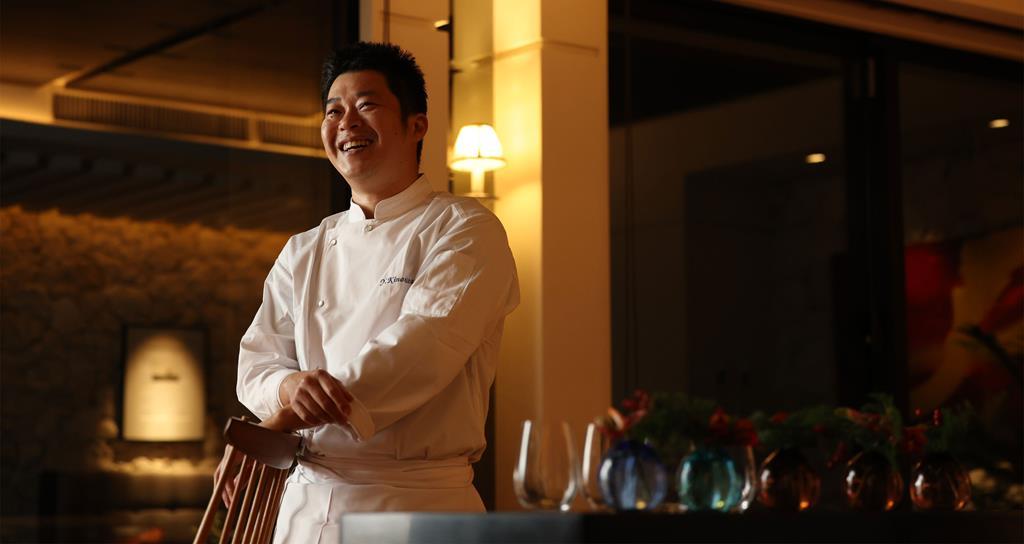
The Hiramatsu group’s fourth resort hotel, THE HIRAMATSU HOTELS & RESORTS GINOZA opened its door as an auberge back in 2018 on the Okinawa's main island, where Okinawa’s municipal capital resides. It was the legendary Hiramatsu, the first Japanese chef to receive a star in the French Michelin Guide, who appointed his protégé Yoshinobu Kinoshita, the former head chef at Brasseries Paul Bocuse Ginza, to lead the culinary experiences of the resort.
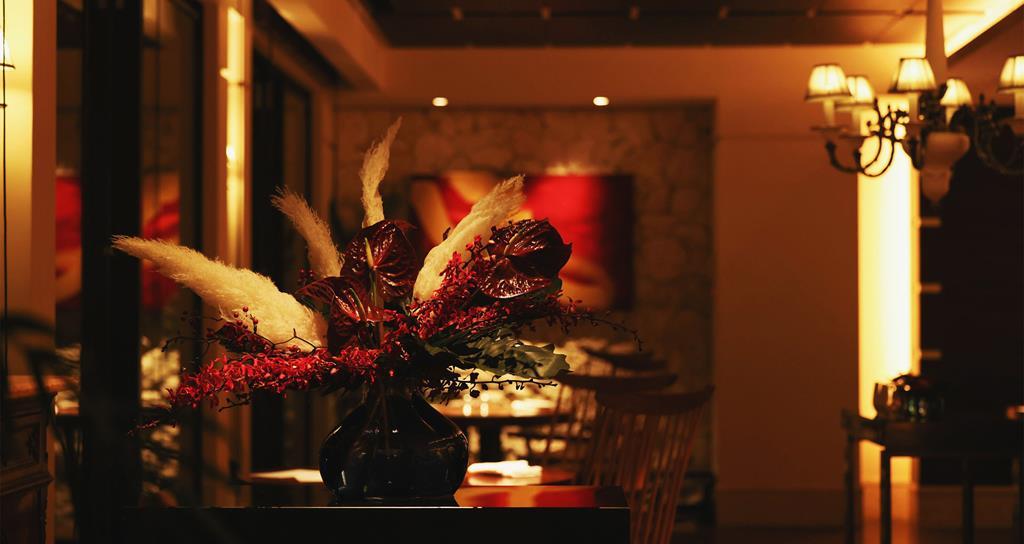
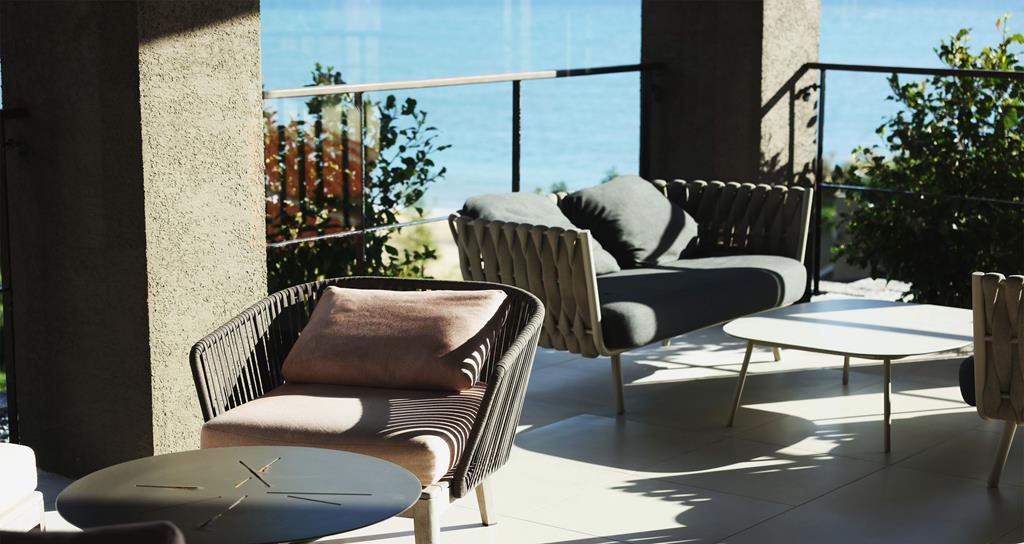
Ginoza Village where the resort resides, a perfectly distanced with approximately an hour drive from the Naha Airport, is Hiramatsu’s favourite part of Okinawa. The gentle slope overlooking the ocean holds the resort’s 19 rooms of which 5 are private villas equipped with a spacious jet bath, but one of the highlights at the resort is undeniably its dining room - with an incredible vista.
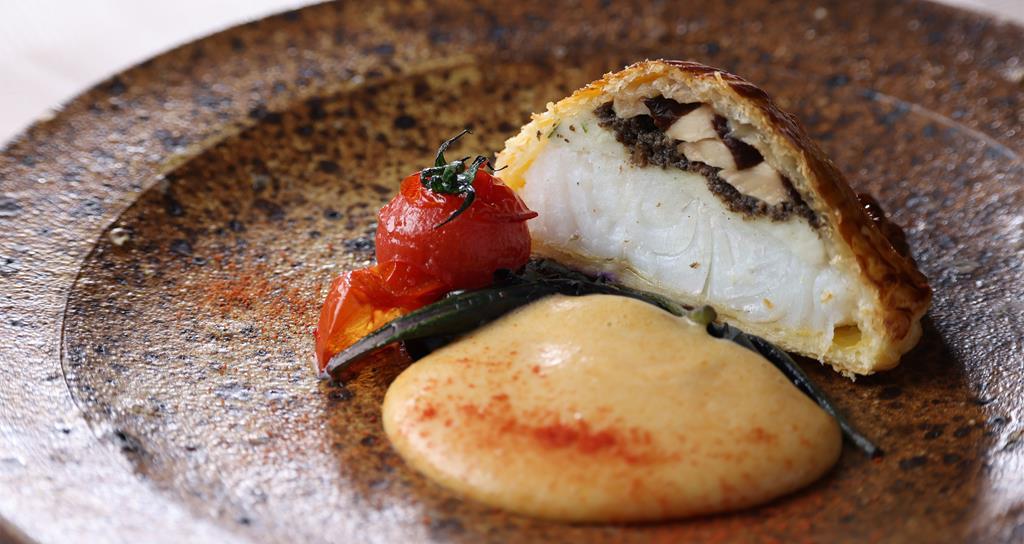
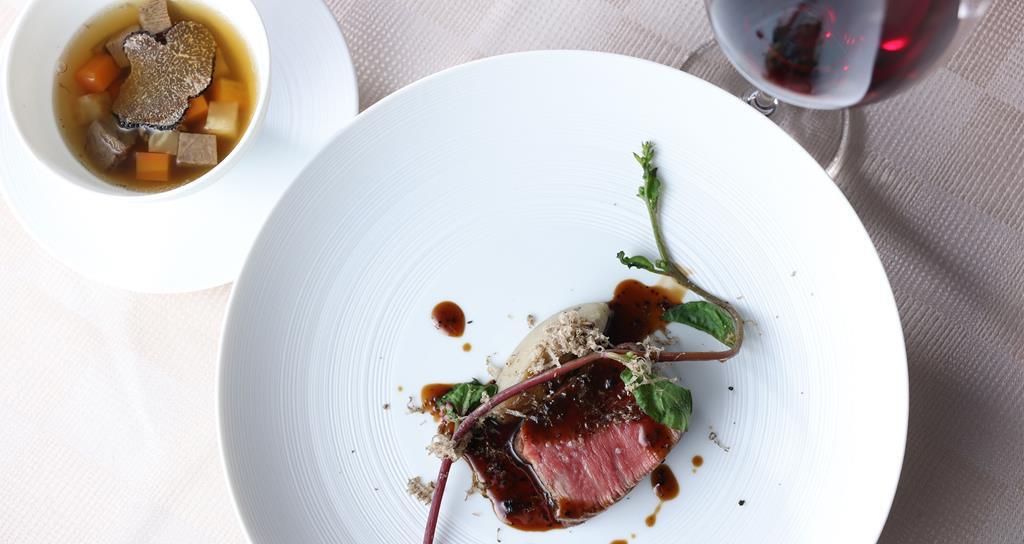
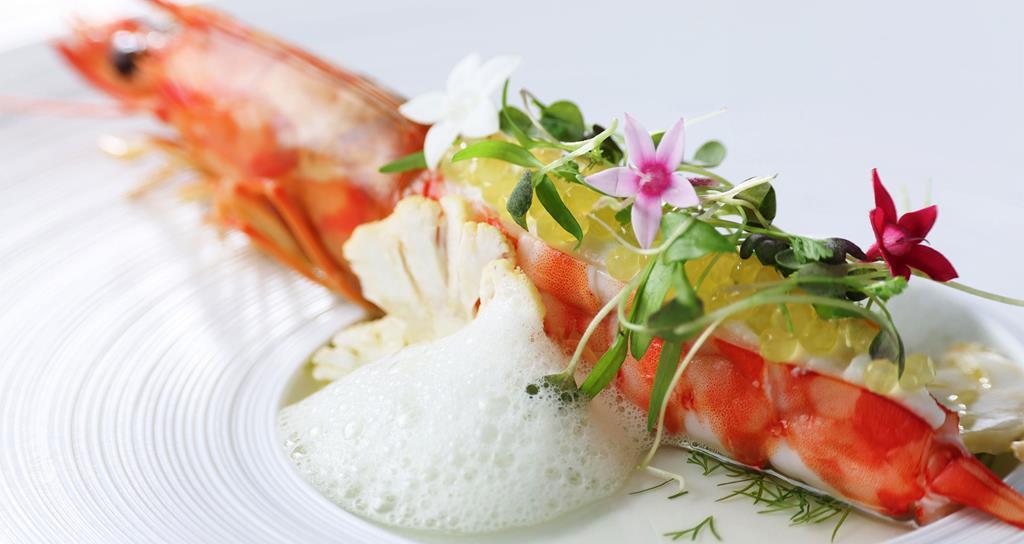
Complimented with the gentle ocean breeze, the dishes served used to mirror the menus from the group’s counterparts in Tokyo, with ingredients acquired from afar, but Kinoshita’s attention was gradually shifted to Okinawa’s rich terroir – with the unique local ingredients convincingly created by passionate and genuine producers – and now many of the produces used in his dishes are sourced locally. A great example is a dish of Akajin Mibai, a type of grouper layered together with Oubirin-take (a native mushroom from Onna village) in pastry served with béarnaise sauce and Okinawan spinach. A tinge of sourness mingling perfectly with the rich sauce certainly resembles the familiar ‘Hiramatsu-ness’ always offering an authentic French flair, but there is a distinguishable, subtropical flavour that makes his creation memorable. A perfectly roasted butter-soft Motobu beef is also one of the highlights. “Some of our guests are often tired from a long journey. Something simple and light is what I try to prepare”, Kinoshita smiles.
Hyakunagaran
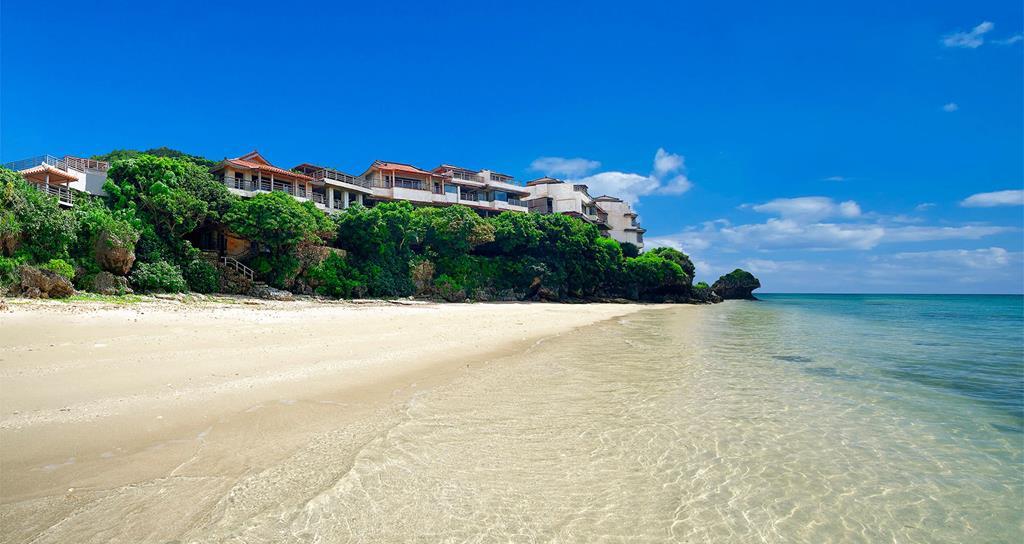
At the southeast coast of Okinawa's main island, a 40-minute drive away from the Naha Airport resides Hyakunagaran. Neighbouring Kudaka Island is known as the origin of many mythological tales of Ryukyuan Gods, dating back to the time of the Ryukyu Kingdom.
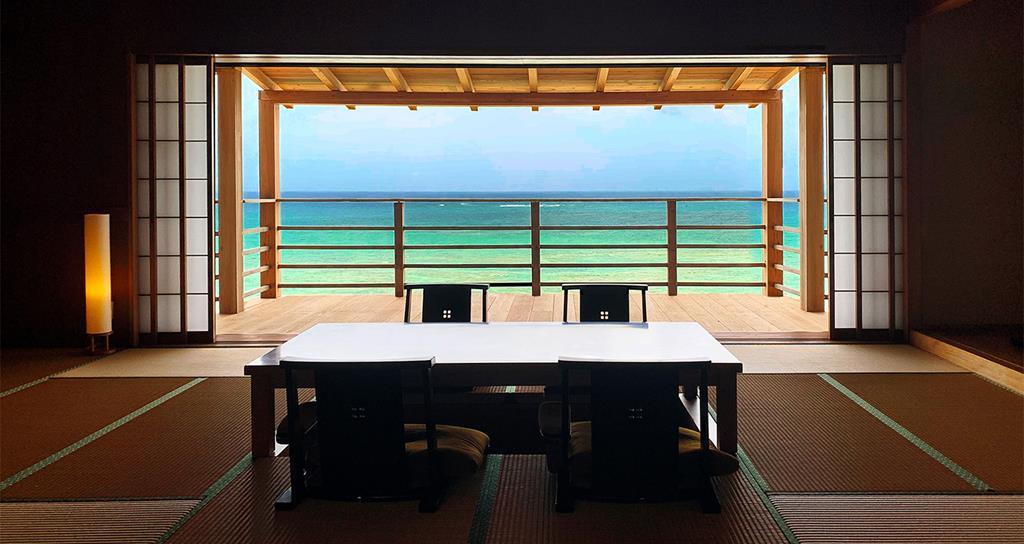
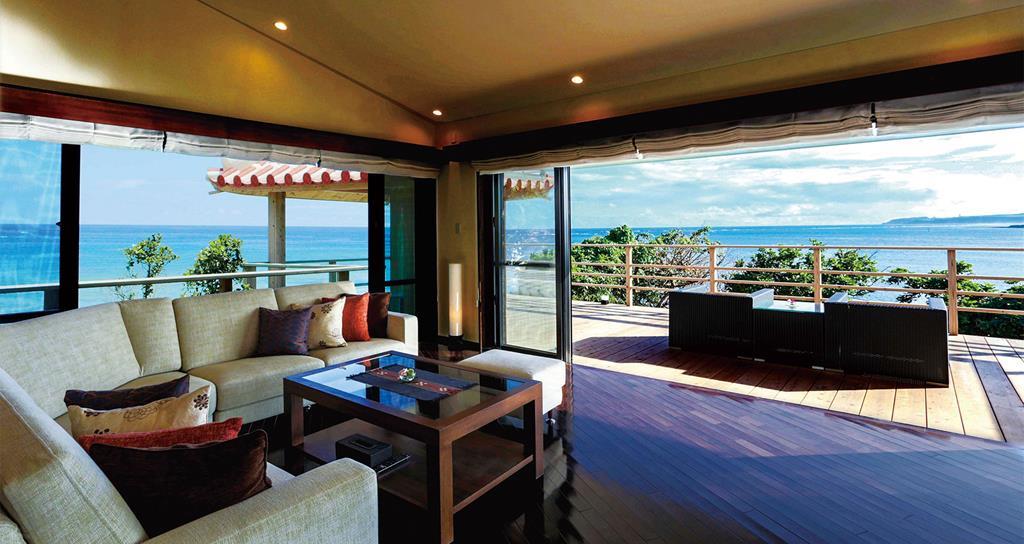
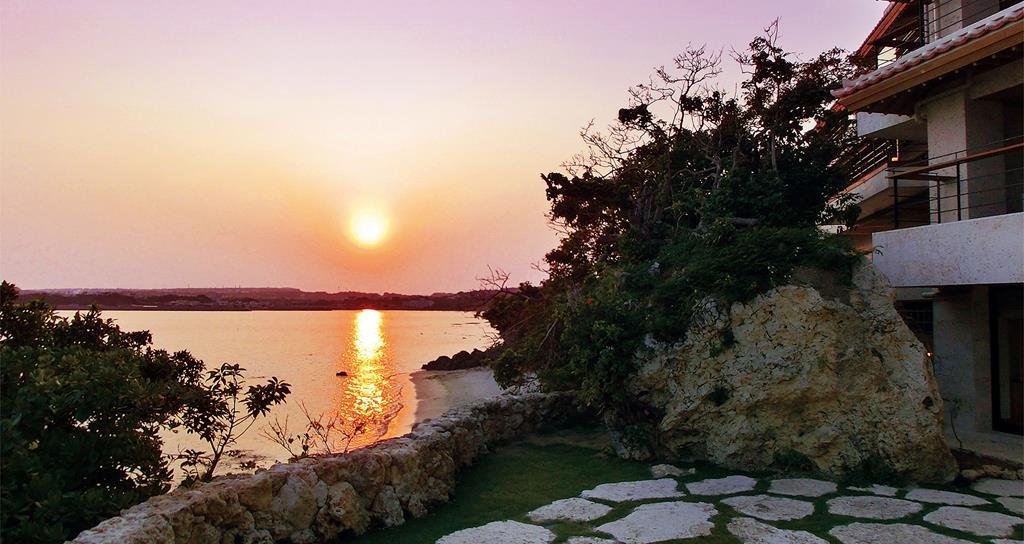
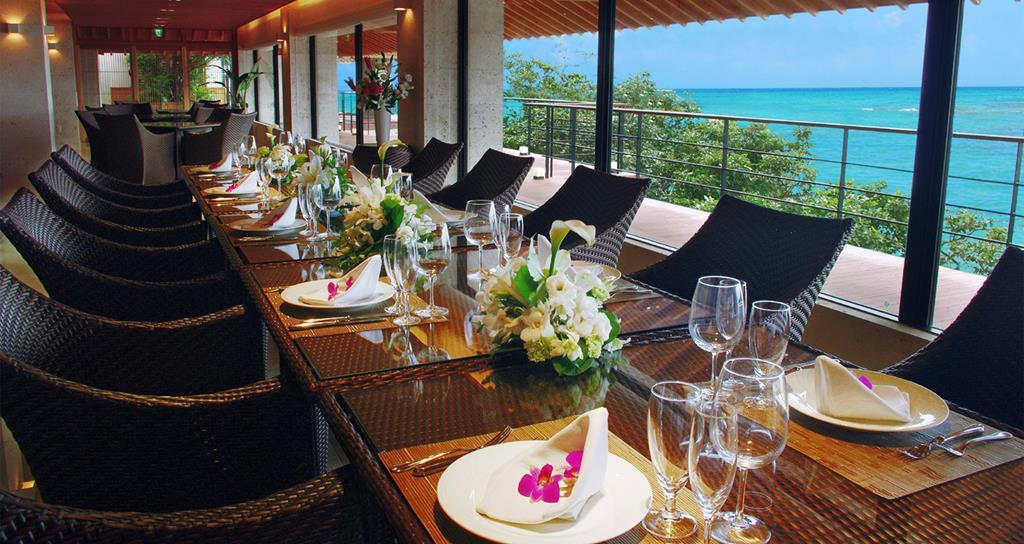
Overlooking the beach, the Hyakunagaran, with its distinctive red-tiled roof and white limestone walls, is a perfect fusion of Japanese and Ryukyuan styles, differentiating its demeanor from other luxury accommodations.
The core concept here, however, is Zen. As the name "Garan" implies, the interior of the hotel was designed with a temple in mind, creating a sense of euphoric tranquility. There is a specially designed meditation room, an ideal sanctuary to calm the senses.
The Hakuin Room, one of the suites comes in Japanese tatami flooring, with a terrace and a private rooftop bath with a breath-taking vista, perfect for gazing at the horizon.
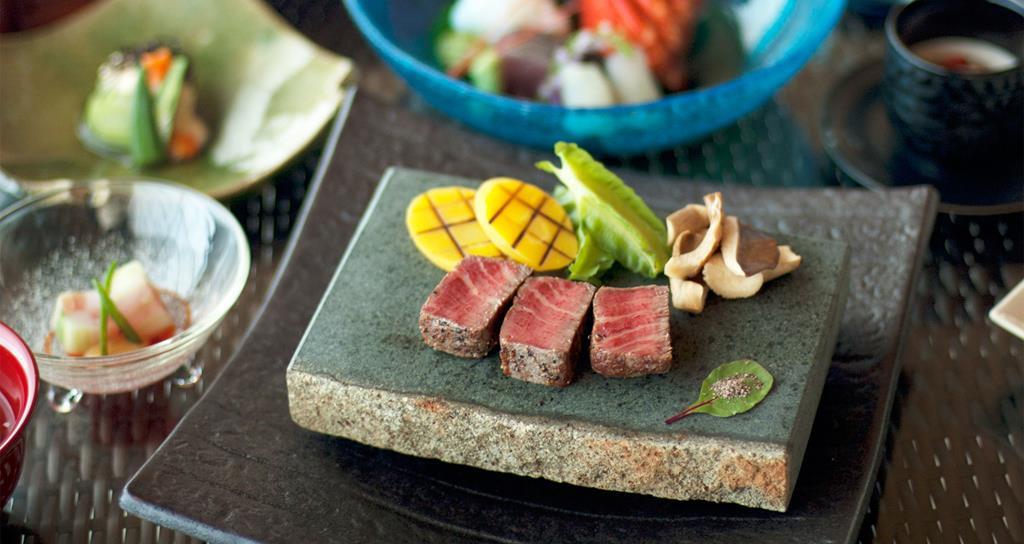
The culinary experience here offers a “Japanese-Ryukyuan” Kaiseki-style, Japanese cuisine with Okinawan Influences in another words, served of course with enveloping azure of the sea and star-filled sky.
